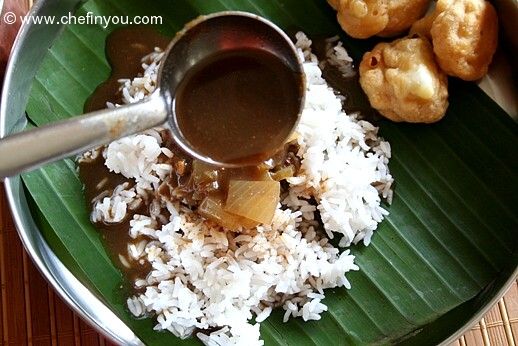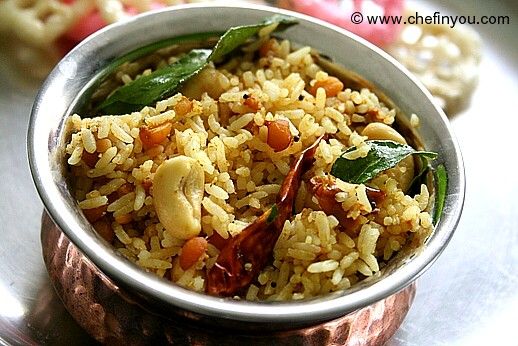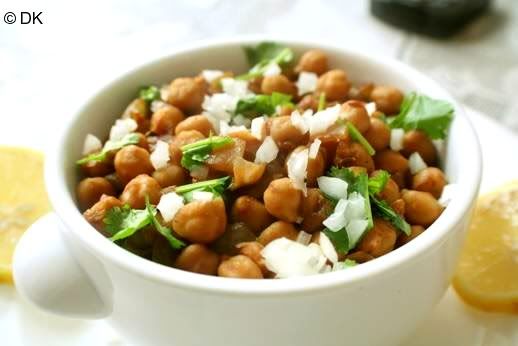Homemade Tamarind Paste (OPOS®) by DK on Nov 8, 2017

Amongst the many precious commodities today, taking the top posts for me, are time and energy. We invent gadgets to make our life easier and earn more time in the process; yet we seem to be running around like a headless chicken all over the place. And from my observation, one of the biggest aspects of our lives that has suffered from this phenomenon is the quality of our food intake. I find it saddening that we have somehow justified our consumption of preservative laden foods as a part of our lives. Cooking food for one's loved one has taken a huge backseat - citing social stigmas, lack of time, limited energy or whatever with the essence being that in many families it has not earned the top priority!

[Tamarind Pods Image Source]
I love cooking but the passion has been replaced with necessity thanks to many other chores fighting for attention. Hence I force myself to plan a weekly menu and cook many staples beforehand to make my day to day cooking easier. In this endeavor OPOS® has been a big help. If you are new to OPOS® method of cooking, I would suggest reading this post of mine. The only drawback for many Non-Indians would be the lack of this style of pressure cooker in your kitchen. Its not expensive and if you can invest in one, it will pay back its due sooner than you can fathom. There are many OPOS® staples that I make that make my cooking process way easier. Will blog them as and when I can in the coming months. Today we will start out with an essential ingredient in many Indian/Thai - even Mexican dishes.
I love cooking but the passion has been replaced with necessity thanks to many other chores fighting for attention. Hence I force myself to plan a weekly menu and cook many staples beforehand to make my day to day cooking easier. In this endeavor OPOS® has been a big help. If you are new to OPOS® method of cooking, I would suggest reading this post of mine. The only drawback for many Non-Indians would be the lack of this style of pressure cooker in your kitchen. Its not expensive and if you can invest in one, it will pay back its due sooner than you can fathom. There are many OPOS® staples that I make that make my cooking process way easier. Will blog them as and when I can in the coming months. Today we will start out with an essential ingredient in many Indian/Thai - even Mexican dishes.

Tamarind fruit and paste are readily available. But soaking and pureeing the dried fruit every single time of usage can be time consuming. Most of the Tamarind paste available at the stores come with preservatives. Making some right at home is very easy. Lets see how.
- Cook time:
- Prep time:
- Yields: Around 2 cups depending on the variety/brand of the tamarind pulp
Ingredients
- 250 grams Tamarind, (seedless variety recommended) - see Tips
- 500 ml water
Tips
Tamarind pulp comes in blocks - both with seeds and seedless. You can find them in any Asian and Mexican markets. I buy mine from my local Indian grocery. You can even find them online . The tough outer shells from the Tamarind pods have been removed and the pulp has been concentrated into these small blocks. Disclaimer:Even the seedless variety blocks contain inedible tough fibres that need to be removed while making the paste. So keep an eye out for them.
Method
1.
If time is of essence, I would suggest using seedless Tamarind since it makes this process much simpler. In a 2 litre/ 3L pressure cooker, add the deseeded tamarind (remove any fibres that you might find).

2.
But if you don't find it or if that's what you have like me, this is how you would use it., remove as many seeds as possible and place it in the cooker. Add about 2 cups water

3.
or enough to cover the tamarind.

4.
Close the lid with weight. Cook on high for 4 whistles. "High" is when your flame covers the entire base of the cooker. If the flame comes up the sides, reduce it. If it does not cover the base, increase.

5.
You will find in few minutes, the safety valve will stop jiggling and protrude

6.
after which the whistles will follow soon after.

7.
Once the whistles are done, switch off the flame and let the pressure settle.

8.
Upon opening, give it a quick mash.

9.
If you are using the seedless variety, just mash well and strain. If there are no fibres, you can just blend it either using an immersion blender or a blender. If it's too thick, add in little warm water. Otherwise just use a little less in your recipe. The kind of pulp will depend on the brand.

10.
In the variety with seeds, don't use the blender. Take a strainer/colander with large holes, place it above a pan and mash/smoosh it using a spatula (silicone works best) to extract the concentrate. While using your hands would be much easier to squeeze the pulp out, it will unfortunately shorten the shelf life of your paste.

11.
The tamarind paste will separate from the fibers and collect on the other side of the sieve and also in the bowl.

12.
I have a plate with bigger holes than all my strainers, hence using that here.

13.
A potato masher also works well to squeeze out all that delicious paste.

14.
You can try adding a little water to the remaining solids and see if you can squeeze some more of the paste. Discard these fibres or use them to season your soups/rasam/sambar recipes.

15.
Now your Tamarind paste is ready to be used.

How to Store
Use a non reactive container like glass, ceramic to store the paste. It keeps well for 3-4 months (even more perhaps) refrigerated. A mini batch lasted more than 3 weeks at room temperature in the California summer. The kind of climate will depend on how long it stays good at room temperature. Or if you are making a huge batch, freeze part of the paste. Pour them in ice cube tray and once frozen, remove and transfer to freezer safe ziplock bags where it keeps well for 5-6 months. Since this Tamarind paste is already cooked, your cooking time using this paste (in your dishes) is reduced since you don't have to cook out the rawness of tamarind thereby saving you time during stressful weekdays!
Use a non reactive container like glass, ceramic to store the paste. It keeps well for 3-4 months (even more perhaps) refrigerated. A mini batch lasted more than 3 weeks at room temperature in the California summer. The kind of climate will depend on how long it stays good at room temperature. Or if you are making a huge batch, freeze part of the paste. Pour them in ice cube tray and once frozen, remove and transfer to freezer safe ziplock bags where it keeps well for 5-6 months. Since this Tamarind paste is already cooked, your cooking time using this paste (in your dishes) is reduced since you don't have to cook out the rawness of tamarind thereby saving you time during stressful weekdays!

Filed Under these categories
- 48 Condiments
- 291 Dairy Free
- 447 Gluten Free
- 29 Indian Condiments
- 705 Kid Friendly
- 384 Nuts Free
- 10 OPOS Condiments
- 12 Sauces
- 177 Sugar Free
- 6 Thai
- 6 Under 15 min - How to's
- 499 Vegan Recipes
Ideal Accompaniments
South Indian Sambar By DK on Aug 8, 2012
5 min (OPOS ) Milagu Kuzhambu (Pepper Tamarind Stew) By DK on Feb 20, 2017
Vendhaya Kuzhambu (Fenugreek-Tamarind Stew) By DK on Feb 20, 2012
South Indian Tamarind Rice By DK on Jan 8, 2010
Tamarind Chutney By DK on Nov 26, 2008
Bisi Bele Bath By DK on Nov 25, 2008
Punjabi Chole(y) or Channa Masala? By DK on Nov 16, 2008
Recipe Reference
OPOS® Manual and OPOS® Video
Related Posts
Easy 8 min Ginger Garlic Paste ( OPOS® method) By DK on Nov 22, 2017
Easy Pulikachal (OPOS©) By DK on Mar 26, 2018
OPOS Palak Paneer (Saag Paneer) By DK on May 1, 2020
Easy Rava Kesari (OPOS) By DK on Mar 9, 2018
OPOS Bottled Tadka (with Lentils) By DK on Mar 1, 2018
OPOS Rava Upma By DK on Mar 5, 2018
Leave a Reply
I love to hear from you! I read each and every comment, and will get
back as soon as I am able to.
3 Comments
By shanti on Nov 14, 2017
We can add a bit of salt while cooking...
By Ranga Nambakam on Nov 9, 2017
Excellent recipe and a great alternative to buying ready made paste from TRS or Priya. Being the essential ingredient for Pulikaachal, rasam, sambar etc., I would rather make this at home as above. Will do soon.













By Krithika on Apr 6, 2018
I have never encountered sand in my tamarind and hence I am not sure how to rectify this for you. If it is too bothersome, may be dilute it some more with hot water (small portions), strain this water with a tea strainer and keep this tamarind liquid to use in your recipe? --DK